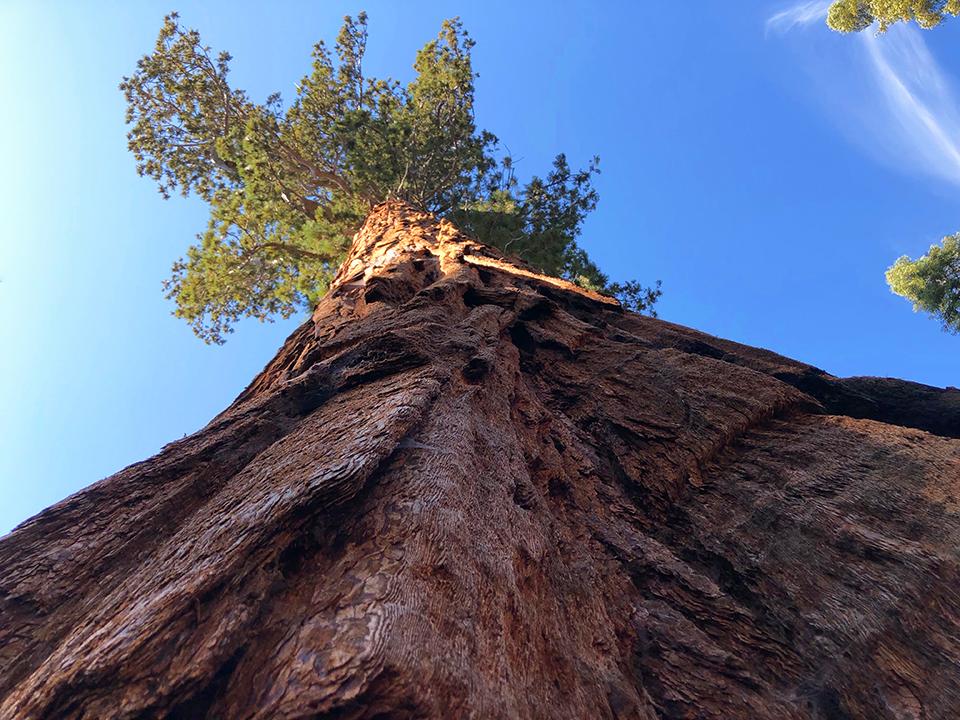
Looking skyward at a giant sequoia tree, Sequoia and Kings Canyon National Parks / Nate Steiner
I had this quiz all planned to coincide with my trip to Sequoia and Kings Canyon National Parks. I was going to use photos I’d captured while visiting these places. Emergency eye surgery kept me from my appointed date with these parks, but it doesn’t keep me from posting this quiz, regardless. See how much you know about these awe-inspiring trees and the parks in which they live.
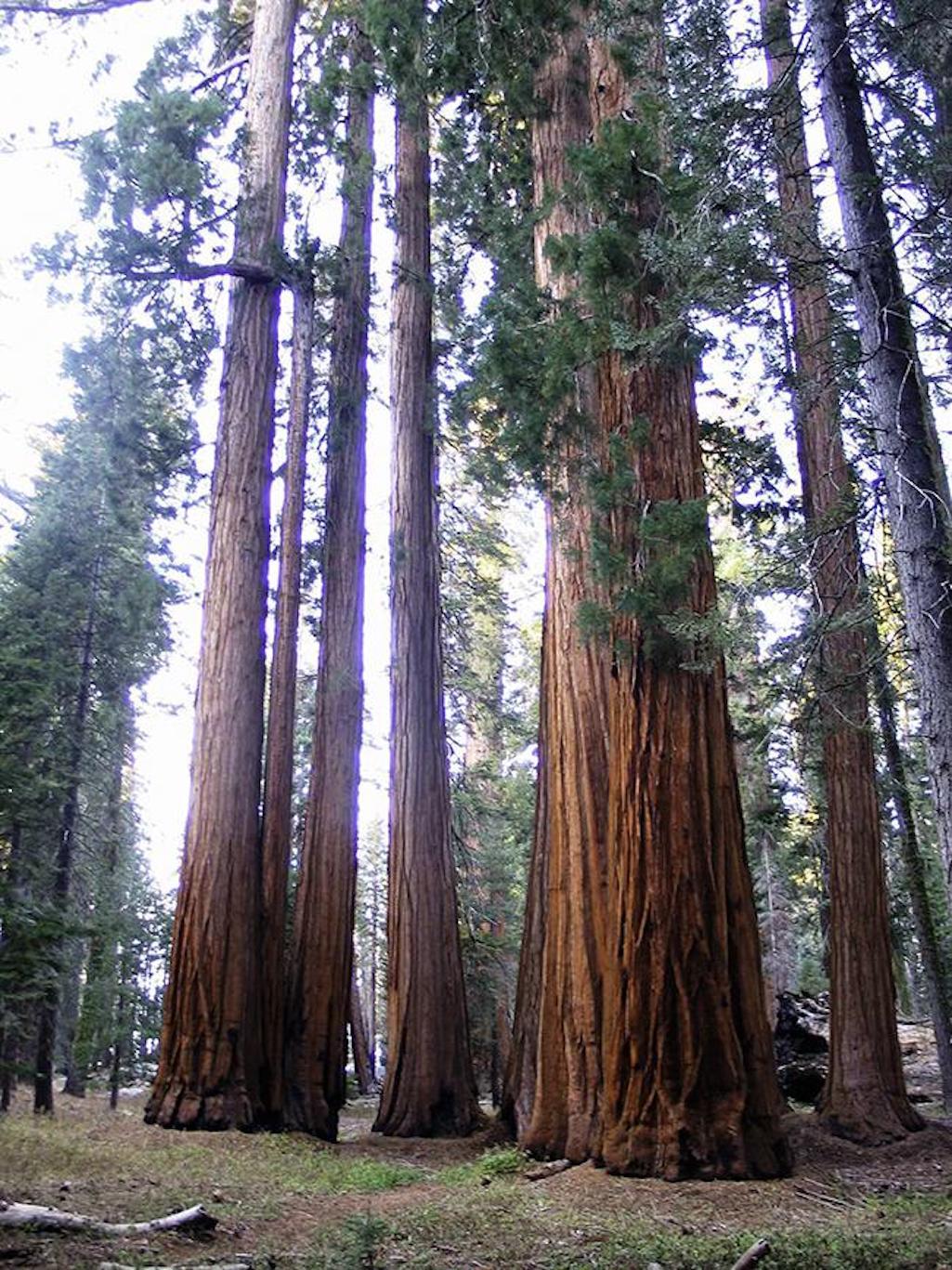
A cluster of sequoias, Sequoia and Kings Canyon National Parks / National Park Service
1. How much water can giant sequoias take up into their canopies?
a) 300 gallons
b) 500 gallons
c) 800 gallons
d) 1,000 gallons
2. True of False: The General Grant Tree is the largest tree in the world (measured by volume).
a) True
b) False
3. True or False: giant sequoia trees are the world’s oldest trees.
a) True
b) False
4. Sequoia and Kings Canyon National Parks contain quite a few bodies of water:
a) 3,200 lakes and ponds
b) 3,500 lakes and ponds
c) 3,700 lakes and ponds
d) 4,000 lakes and ponds
5. As you wander these parks, you might notice a number of Douglas fir trees that have lost their needles. This is due to:
a) the gypsy moth
b) the roundheaded wood borers
c) the Douglas-fir Tussock moth
d) the Douglas-fir twig weevil
6. Just as with other units of the National Park System, Sequoia and Kings Canyon National Parks have their share of non-native plant species, brought in by humans either intentionally or unintentionally. Nearly one in ____ plant species in the parks is non-native.
a) one in five
b) one in six
c) one in seven
d) one in eight
7. True or False: Kings Canyon is one of the deepest canyons in North America.
a) True
b) False
8. True or False: Redwood Canyon is one of the smallest of all sequoia groves in the park.
a) True
b) False
9. True or False: Sequoia National Park is the country’s second national park.
a) True
b) False
10. True or False: Sequoia National Park was the first park created to protect a living organism.
a) True
b) False
Trivia
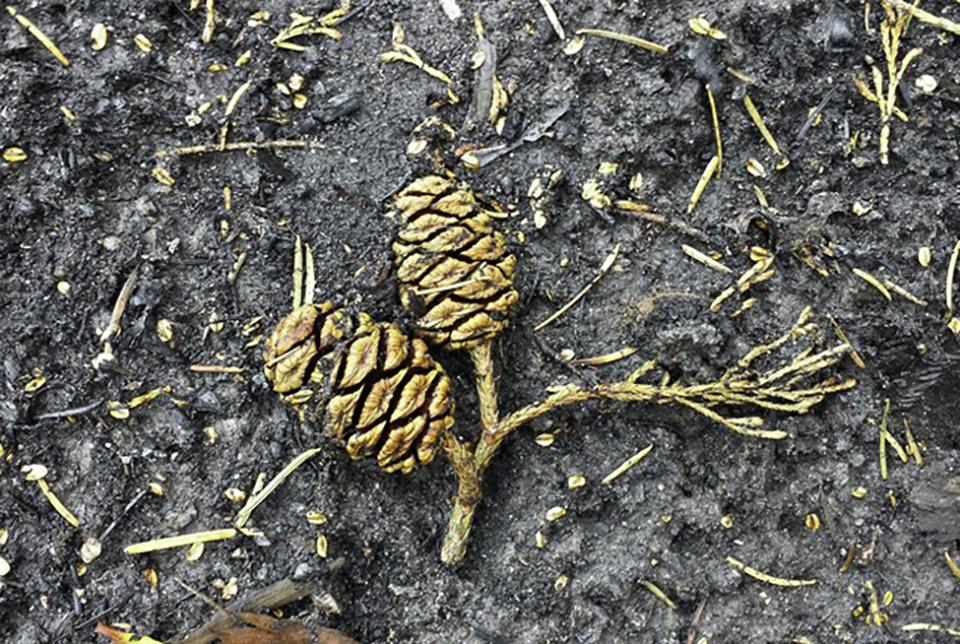
Giant sequoia cones and seeds after a fire, Sequoia and Kings Canyon National Parks / NPS-Anthony Caprio
“The life story of the giant sequoia begins with a very small seed, the size of a grain of oatmeal – 91,000 sequoia seeds weigh just 1 pound! To germinate and survive, sequoia seeds must fall on the mineral soil left bare by fire – without it, seeds will not successfully grow into new sequoia seedlings. Both Douglas squirrels and cone-boring beetles can also release seeds, but if they don’t fall on bare soil cleared by fire, they cannot germinate.”
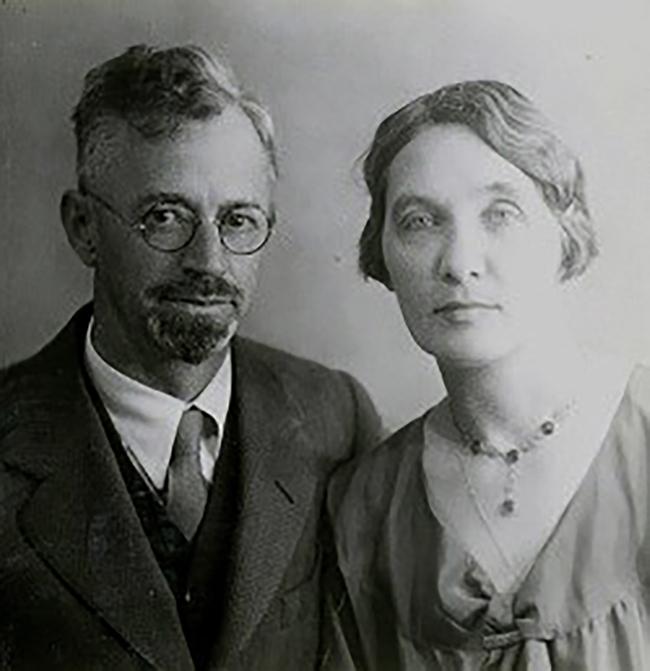
Susan Thew with her husband Hugh Parks, Sequoia and Kings Canyon National Parks / National Park Service
“Susan Thew was born to a wealthy family in Ohio in 1878. She grew tired of winters in Ohio, and left for California with her father Richard, an industrialist and inventor. In 1918 she encountered the sequoias of the Giant Forest for the first time and was immediately captivated. She became an advocate for an expansion of Sequoia National Park and began travel in the High Sierras in 1923. Thew covered hundreds of miles of terrain in the High Sierras, documenting as much of the landscape as she could. She photographed areas few people had seen before. She believed that if people could see the area’s beauty, they would want to expand and preserve it as a national park. Thew created the largest work of this region at the time.” To read more about this remarkable woman, click here.
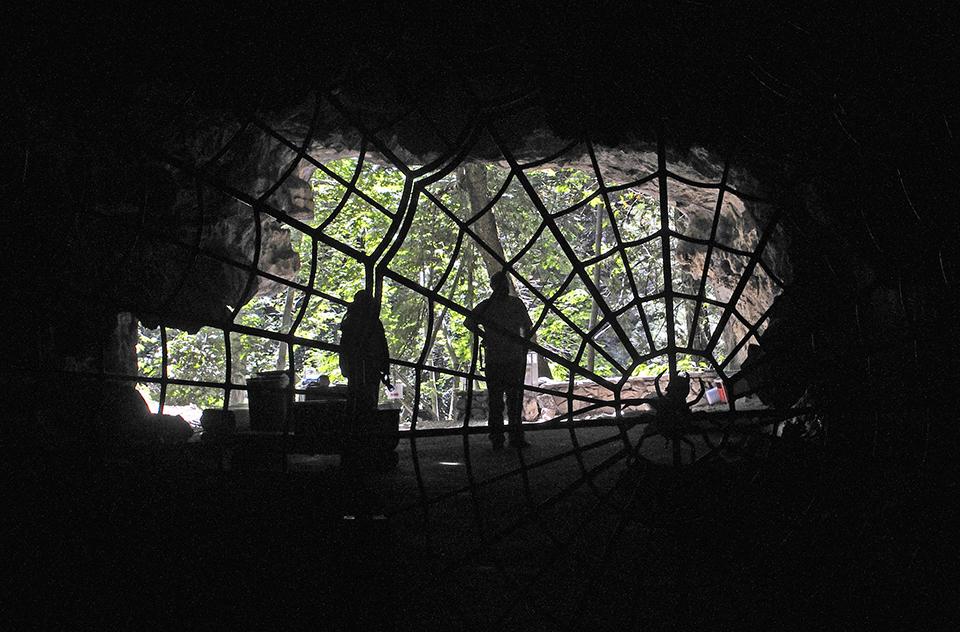
Crystal Cave's famous spider gate, Sequoia and Kings Canyon National Parks / National Park Service
The first thing that comes to mind regarding Sequoia and Kings Canyon National Parks would have to be the trees, right? “By some accounts Sequoia and Kings Canyon National Parks could have been set aside solely to protect the amazing caves found in this area of the Southern Sierra Nevada. The two parks protect half of the caves more than a mile long in California, the longest cave in the state, numerous karst streams, and some of the best alpine karst topography in the United States. The caves contain Pleistocene era fossils, rare minerals, and unique animals. They are the sites of numerous scientific research projects and provide recreational opportunities to thousands of park visitors each year. These parks contain at least 275 caves. This number continues to rise as more caves are discovered. Caves are found primarily in the western one-third of the parks in narrow bands of marble. Caves form where streams on the surface are diverted underground, and the mildly acidic waters can dissolve soluble rocks like limestone, eventually forming caverns.” To read more about the caves within these parks, click here.
Quiz Answers
1c
In an April 2021 Feature Story written by the Traveler’sRita Beamish about the threats facing the giant sequoia trees, it was reported the really, really big sequoias can “suck up to 800 gallons a day in summer.” Given the current heat wave, these poor trees (and everything else) are going to have a hard go of it, I think.
2b False
The General Grant Tree is the second-largest tree in the world, at 46,608 cubic feet (1,320 cubic meters). The General Sherman Tree is the largest tree in the world, at 52,508 cubic feet (1,487 cubic meters), standing 275 feet (83 meters) tall and over 36 feet (11 meters) in diameter, at the base.
3b False
While not the world’s oldest trees, giant sequoias have been known to reach an astounding old age of 3,400 years. That’s one heck of a tree ring history! Oh, bristlecone pines are considered the world’s oldest trees.
4a
“These parks contain nearly 3200 lakes and ponds, and most are located at high elevations (above 8,000 feet, or 2500 m). Sierra Nevada lakes are chemically dilute and low in nutrients due to the high-elevation settings where they occur, with shallow soils and sparse vegetation.” To read more about the lakes and ponds in these parks, click here.
5c
“The Douglas-fir tussock moth is a native insect found in the parks and throughout the Pacific Northwest. The Douglas-fir tussock moth caterpillar is easily identified by the four prominent tufts (or tussocks) that run along its back. The moth feeds on Douglas-fir trees and other true firs. The Douglas-fir tussock moth population fluctuates, with major population increases every 7 to 10 years—the last big outbreak in the parks was in 1997-1999. This year, we [park staff] have begun to notice signs of another population surge.” To read more about this moth (and why you should steer clear of touching it), click here.
6d.
“Nearly one in eight plant species in Sequoia and Kings Canyon National Parks is non-native. Many of these species appear to have a fairly small impact on the parks, but many others are drastically changing ecosystem structure and processes. The plants that have the biggest impact, such as yellow star thistle, periwinkle, reed canary grass, and Italian thistle, can take over large areas, completely excluding native species. Visit the invasive plant information page for details about these species, including identification tips and a history of projects to help manage outbreaks.”
7a True
“In the parks, Kings Canyon is a wide glacial valley featuring spectacular tall cliffs, a lovely meandering river, green vibrant meadows and beautiful waterfalls. A few miles outside the parks, Kings Canyon deepens and steepens becoming arguably the deepest canyon in North America for a short distance.”
8b False
“The Redwood Canyon contains one of the largest of all sequoia groves and largest areas of old-growth sequoia trees.”
9a True
Sequoia National Park was established on September 25, 1890, making it our country’s second national park.
10a True
Found only in the unique environment of the western Sierra, the massive sequoia trees grow at between 5,000 and 8,000 feet in elevation. The relatively mild winters at that elevation, along with a traditional history of fire, has made the mid-Sierra zone the perfect habitat for sequoias. To protect the giant sequoias from logging, Sequoia National Park was established in 1890.
References
In addition to the information within the NPS.gov websites for these two national parks, I also used the following for reference.
https://www.doi.gov/blog/11-things-you-didnt-know-about-sequoia-and-kings-canyon-national-parks



Comments
I wish you a full and speedy recovery from the eye surgery.
My avatar photo (which doesn't actually get posted but can be seen in my profile) was taken during a hike in the Redwood Saddle portion of Redwood Canyon. That was a great experience. None of the trees are marked, off-trail hiking is allowed (unlike the more popular areas), and it's almost always less crowded.
https://www.nationalparkstraveler.org/sites/default/files/legacy_files/u...
Not the first time I saw a bear, but it was the first time I'd seen cubs in the wild.